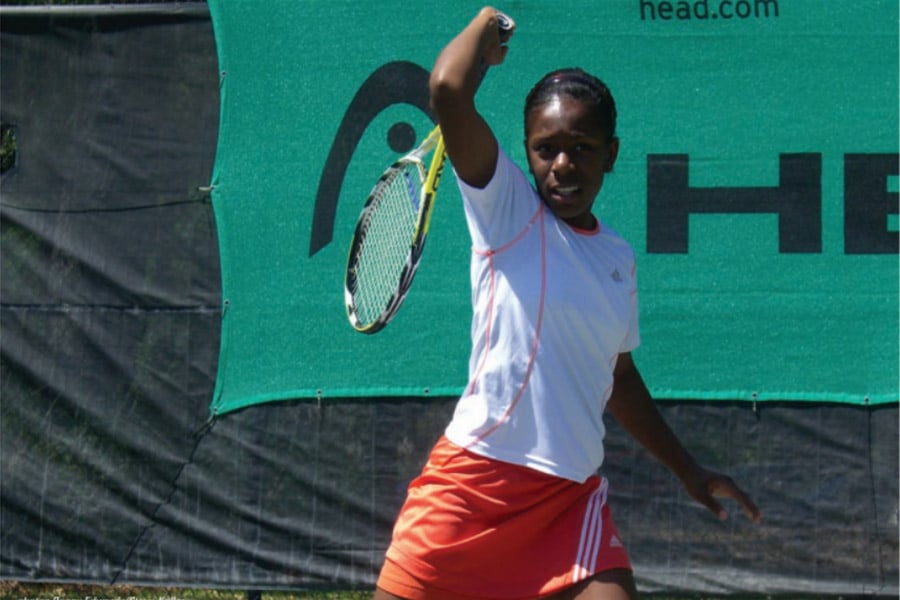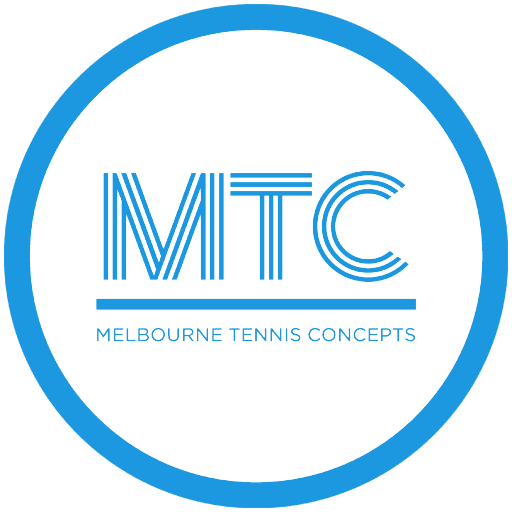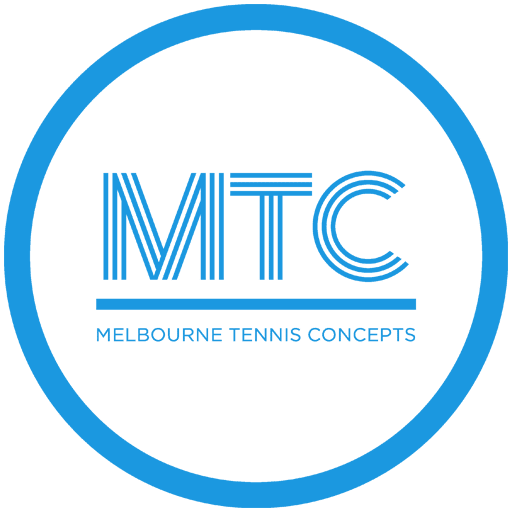You may not have noticed, but technique is the favorite topic of most people involved in tennis. Players talk about it (just listen to any post match conversation), coaches talk about it, parents, TV commentators, the list goes on. The majority of lessons people take emphasize technique. Just look at tennis videos, magazines and websites, and see what’s talked about most. Technique seems to be the big fixation. The reason is that tennis is a complex motor sport. The coordination, agility and balance required is challenging even for the best athlete. You could take an athletic phenom who has exceptional mental toughness (like Michael Jordan, for example) and, if he had no previous tennis training, most 4.0+ club players would take him apart on the court. Their technical superiority would win the day. Learning technique is a critical aspect of tennis. Any way to improve and speed up the process of learning technique would be invaluable for every player and coach. That process is now here.
The Tactical/Technical Connection

The Tactical/Technical Connection
by Wayne Elderton
Wayne is a certified Canadian National Level 4 Coach, a PTR Professional 5A, and the Head of Tennis Canada Coaching Development & Certification in British Columbia. He is a popular speaker at numerous coaching conferences and is an international expert on the Games Based Approach and its application to all levels.
He has written coaching articles and materials for Tennis Canada, Tennis Coaches Australia PTR and the Midtown network of tennis clubs. Many of these can be accessed on his website www.acecoach.com
A New World Order
It is obvious that the game has changed in the last 30 years. Has coaching kept up and continued to evolve as well? Although the ‘stuff’ that is coached has, for the most part, modernized (see all the emphasis on the modern game technique in the last few years), the process used to coach has remained basically the same.
One of the key initiatives addressing this issue to emerge in the last several years is the Games Based Approach (GBA). It has gained popularity in coaching circles and the term is used frequently without coaches really understanding its powerful premise.
The premise for the GBA is simple: Tennis is a Game. Every game needs to be played, and playing is a tactical endeavor. Success in any game requires clear intentions, decision making and problem solving. In regard to technique, tennis is not figure skating. No judges are at the side saying, “Your follow through was much better than your opponent’s, 15-0 for you!”
Technique is second (behind tactics), but not secondary. Don’t misread this! I am not saying technique is not important. It is critical for tennis success. However, if you really want to set the stage for meaningful technical stroke development, the key is tactics (no, this is not a typo).
This tactical priority can be a stumbling block for coaches. Especially since the majority of their coaching diet consists of technical material. Before a coach can integrate tactics and move from mere technical coaching to Tactical-Technical coaching, there are some fundamental questions that need to be asked.
- What is the relationship between tactics and technique
when coaching? - How can coaching flow from tactical to technical?
- How does a coach deal with both tactics and technique in
a systematic way?
Most players and coaches are unaware of the debate going on in coaching circles surrounding the GBA. Detractors mistakenly think that technique is mishandled or ignored in a GBA. That is only true if a GBA is applied incorrectly. If we understand what the current motor learning and brain function research is telling us, the Games Based Approach is the best and most effective way to learn technique.
One of the most effective ways to utilize a GBA is to use what I call “Situation Training” (ST). The goal in ST is to identify the situations players encounter in match play and improve their performance in those situations. Sounds simple enough, however, the typical technical coaching employed by coaches doesn’t give them the necessary tools.
The Two Become One
For the majority of coaches, technique and tactics are two distinct and separate categories. Nothing could be further from the truth. In today’s world of biomechanical analysis and high speed digital imaging, the tactical/technical link gets lost all too often. This false separation causes players to spend thousands of dollars on technical lessons that improve the appearance of their strokes, but don’t improve their play much at all. Ask any group of park or club players, “How many of you lose to opponents who are technically worse than you?”, and almost everyone will raise their hand. Everybody can tell you about the latest techniques, but few know how to play well. This shouldn’t be the case.
The tactical/technical connection is simple. Technique is only a means to perform a tactic. Technical skill by itself is useless in a game if it is not used in the right way, at the right time and in the right location. The fact is, without tactics, good technical strokes are simply an exercise in looking stylish. Imagine a soccer player who kicks the ball with impeccable skill. His shot on net beat the goalie easily. Although he kicked with great technique, his team was furious. Why? Under pressure he put the ball in his own net. Good technique, wrong tactic. This may be an extreme example, yet in tennis, players execute really
bad ideas with nice strokes all the time.
Learning a stroke without a tactical intention is deficient. How many players have had a coach feed them baskets of balls to ‘groove’ a stroke that they were unable to use in a match? If the coach doesn’t spend a lot of time integrating the skill into tactical play, the likelihood of the player using it in real match play is little to none.
The reason? The stroke was learned isolated from reality. In real match play, every stroke requires decision making. Tactics are about decision making. It is the choice a player makes of
what technique to use, when, where and against whom. No one can play well without tactics, and no tactic can be executed without some form of decision making.
WARNING: If a coach can grasp the critical point that there is a smooth connection between tactics and techniques, their coaching upgrades dramatically.

Let’s explore the tactics behind the techniques. In Photo 1, the follow through is down and around the left hip. This would be considered ‘wrong’ by many coaches. However, it is excellent technique when the tactic is an attacking ball received high (especially if the intent is to follow it to the net). This follow through is the natural result of the racquet accelerating level through the ball from a chest height impact coupled with a full
body rotation. Any other follow through wouldn’t allow her body and racquet to do what it needed to accomplish the tactic.
In Photo 2, the follow through is a more ‘classical’ over-the-shoulder finish. This was the result of hitting a deep penetrating shot with some topspin in order to neutralize an opponent in a rally.
In the third photo, the follow through ends up circling the back of the head. This has been called, the ‘inverted finish’, the ‘bender’, the ‘flip’. I will sometimes describe it as a ‘lasso’ finish. Whatever it is called, this strange finish has become common for all pros. The tactic is that the opponent has hit a shot with pace that has moved her to the side. To respond, she counters with a high arcing topspin to gain time. The compact preparation needed to receive the harder shot, the impact at the side (an out front impact would not allow the required vertical path),
the quick low to high action, resulted in this follow through. These are not ‘one off’ cases. Just watch any pro tournament and you can see these follow throughs constantly. Are Photos 1 and 3 wrong? If so, those pros should give back their millions of dollars! Obviously, they are all ‘proper’ (perfectly fit to the situation encountered).
Technically, it is not only the follow through that varies when the tactic changes, but the size of the preparation, speed and rhythm of the swing, racquet path, body rotation, impact point and footwork as well. These are not the expression of players’ styles, but the application of situation-specific technique. Every pro player knows (consciously or unconsciously) that there is a direct connection between tactics and technique. It is only coaches who don’t get it.

This association may seem complex at first, but in my experience training hundreds and hundreds of coaches, it is one of the most important concepts needed to master for advanced coaching (not coaching advanced players, but advanced coaching). The connection moves from tactical to technical (or from technical to tactical) through these steps:
1. Tactics
First define the Tactic the player needs to perform (e.g. a
forehand crosscourt rally shot to neutralize the opponent).
The Tactics include the intentions, decisions and problem solving
in which a player must engage to win more points (or lose fewer).
2. Ball Control
Next, determine the key Ball Control characteristics needed for
the tactic to be effective. This includes receiving the different
Ball Controls, as well as sending them. Ball Control is a critical
bridge between tactics and technique.
The 5 Ball Controls are:
- Height
- Direction
- Distance
- Speed
- Spin
In our forehand example, the ball must be higher, with an arc trajectory and topspin, to the crosscourt corner. How the ball is controlled is directly determined by what the racquet does to the ball at impact. These are called the P.A.S. Principles (racquet Path, Angle, and Speed). For our example, the racquet path would be low to high (approximately 40 degrees), the angle would be vertical with the strings facing toward the
crosscourt corner, and the speed would be medium pace but accelerating through the impact for topspin. Remember, body mechanics don’t directly determine what the ball does, the PAS
Principles do!
3. Technique
Finally, the mechanics needed to perform the shot consistently, at higher speeds, without wasting energy (economy) and minimize injury (efficiency) would be applied (e.g. appropriate linkage of body segments from the ground up). In our Canadian methodology, we actually include Ball Control in the technical category. It is called, “the twofold definition of technique” (what the ball does and what the player’s body does). The key point is that technique is only ‘proper’ if it accomplishes the task for which it was meant. As a young, inexperienced coach, I spent way too many hours fixing the ‘shape’ and ‘look’ of players’ strokes (unfortunately, not improving their
match performance much). A coach will often see (and comment to the player) a number of technical issues, however, only the one that helps the player’s performance should be the focus. Technical instruction should be to control the ball in order to perform a tactic (not just because a coach wants a player to look a certain way).
Key Point – Technique is only proper if it accomplishes the task for which it was meant.
Learning Proper Technique
So which technique do you teach? Is there such a thing as a ‘basic’ one that everyone should learn? Think about all the hours coaches spend basket feeding thousands of ‘forehands’. The questions they should be asking are, “Which forehand is being learned?”, “Is it the one that is most useful?” and “What about the others required for successful play?”
In a GBA, learning the game starts with the rally shots (since the main goal of starter players is a consistent exchange). On the serve and volleys, the same principle applies (shots that allow a player to remain neutral are the best place to start).
However, having said that, even for a beginner, as soon as the situation changes, the technique must change as well. Every shot in tennis is like a move in chess. The player sees what’s going on with the opponent, their location, and the ball received, decides what tactic to use, and applies situation
specific technique. If the technique doesn’t fit the situation, a poor shot will result. Trying to use the ‘one size fits all’ forehand they paid hundreds of dollars to ‘groove’ won’t work. No adaptation = no effectiveness.
After the neutral shots, it would be good to add defensive actions (to maintain consistency when challenged more). Then attacking actions could be added to increase pressure on opponents, and finally countering actions to handle higher speed play, and to turn the table on opponents.
No matter what technique is learned, it is important for coaches to keep the connection between their Tactics, Ball Control and Technique. The greater the disconnect, the more disservice is done to the player learning the techniques.
Conclusion
For example, you see your opponent wide on his forehand side and he sends a mediocre rally ball crosscourt to your forehand. Which forehand technique do you apply? The sharp angled crosscourt topspin? The looping arc deep topspin to the center? Or, do you redirect the ball with a drive down the line? Every shot in tennis presents choices, and each one requires very different technique. Your selection is every bit as important as your form.
Learning strokes in isolated repetition (disconnected from play) doesn’t fully equip players to play successfully. Tennis was not created so players can follow through! Technique is only a means to play (not an end in itself). To really learn technique that is relevant, practical and useful, remember the key tactics!

